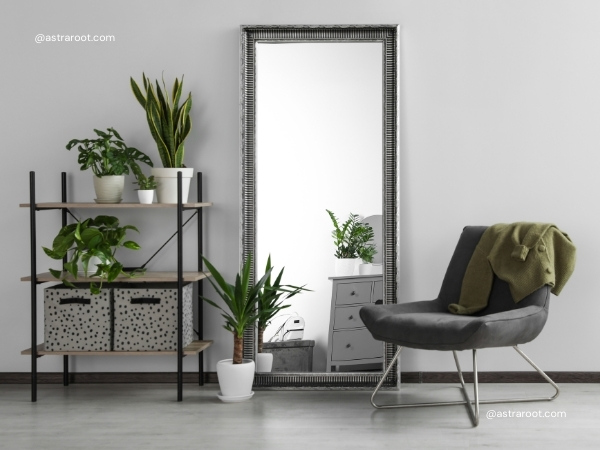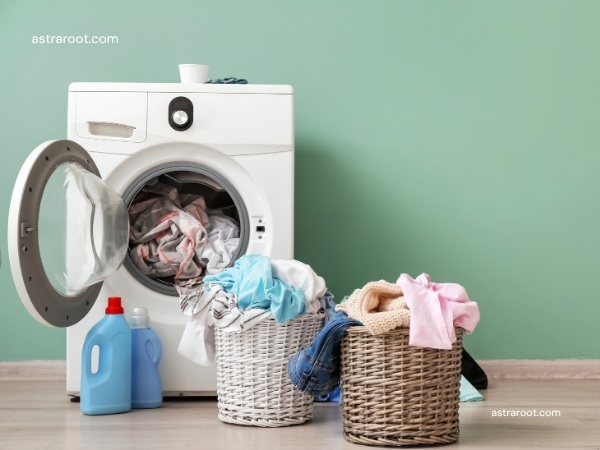Water Tank Vastu – Best Placement Guide for Overhead & Underground Tanks
Want to know the “best place for water tank as per Vastu” or “Vastu tips for overhead tank”? You’re in the perfect spot! In Vastu Shastra, an old Indian guide for building homes, every part of your house affects its energy. And when it comes to storing water, where you put your water tank vastu really matters.
Your overhead water tank, underground water tank, and even water tanks on the ground level are more than just containers. They are big points of energy. Placing them in the right spots, as per Vastu, can bring more money, good health, and happiness into your home. If placed incorrectly, they could cause problems.
This simple guide will explain Vastu for water tanks in an easy way. You’ll learn the best directions, places to completely avoid, and important tips for balancing the energy of Earth and Water.
This will help make sure your home is full of good vibes. Let’s find out how correct water tank Vastu can make a big difference in your home!
Why Water Tank Placement Matters in Vastu
In Vastu Shastra, an ancient Indian science of architecture, every part of your home and everything inside it influences its overall energy.
Think of your home as a living entity, constantly interacting with the energies around it. Water tanks, whether big or small, overhead or underground, are not just simple storage units; they are significant energy points.
- They Represent Powerful Elements:
- An overhead water tank is heavy, and in Vastu, anything with significant weight is seen as representing the Earth element. The Earth element brings stability, grounding, and security.
- Underground water tanks and ground-level tanks hold large volumes of water, directly embodying the Water element. The Water element is all about flow – flow of money, opportunities, creativity, and emotions.
2. Interacting with Directional Energies:
- Every direction in your home (North, South, East, West, and the corners) has its own unique energy and is associated with specific elements, planets, and aspects of life.
- When you place a large object like a water tank, its dominant element (Earth or Water) starts interacting with the energy of that specific direction.
3. Creating Harmony or Imbalance:
- Correct Placement: If you place a water tank in a direction that naturally supports its element (e.g., a heavy tank in the Southwest, or a water body in the Northeast), it creates harmony. This enhances positive energies, attracting prosperity, good health, peace, and opportunities to your home.
- Incorrect Placement: If the tank’s element clashes with the direction’s energy (e.g., a heavy tank in the Northeast, which is a “water” zone, or an underground tank in the “fire” zone of the Southeast), it creates an imbalance. This can lead to various problems like financial losses, health issues, strained relationships, constant worries, or a general feeling of instability.
Overhead Water Tank Vastu – Best & Worst Directions
An overhead water tank is typically placed on the rooftop or terrace and represents a heavy, stable structure. In Vastu terms, it combines Earth + Water elements.

Hence, it must be placed in zones associated with stability, grounding, and containment.
🔸 South-West (Nairutya)
This is the most auspicious direction for an overhead water tank. The Southwest (SW) governs stability, financial security, and the head of the family.
Placing a heavy structure like a water tank here reinforces these aspects, ensuring a steady flow of positive energy and resources.
- Why: South-West is governed by the Earth element and represents stability, support, and strength.
- Placing a heavy water tank here grounds the energy, brings financial security, and strengthens relationships.
- Helps counter imbalances caused by lighter constructions in the North-East.
Pro Tip: If placing in the Southwest, ensure the tank is elevated at least 1-2 feet above the roof level. This further emphasizes its “heavy” nature and helps in maintaining a positive energy flow.
🔸 West
- The West zone, linked with Air and Saturn energy, is also suitable for heavy loads.
- Supports patience, endurance, and career consistency.
💡 Vastu Tip: Build a concrete platform under the tank to prevent direct pressure on the roof and maintain energy insulation.
❌ Directions to Avoid for Overhead Tank
🚫 North-East (Ishan)
This is the most critical direction to avoid. The Northeast is the zone of the “Water element” and divine energies.
Placing a heavy overhead tank here creates a severe Vastu dosha (defect), leading to health issues, financial instability, lack of opportunities, and problems with children’s education. It creates an imbalance that can disrupt the natural flow of positive energy.
- Considered the most sensitive and divine zone in Vastu.
- Associated with space (Akash) and water (Jal), it should remain light, open, and clean.
- A heavy tank here disrupts the flow of spiritual energy, leading to: Mental stress Health complications Financial instability
🚫 Center (Brahmasthan)
The Brahmasthan is the energetic heart of the house and should be kept free of any heavy structures.
Placing a water tank here can cause severe health problems, anxiety, and a feeling of instability for the inhabitants.
- The center represents the unobstructed core energy field.
- Any weight here—especially a tank—disturbs the energy flow, resulting in overall imbalance.
🚫 South-East (Agneya)
Associated with the “Fire element,” placing an overhead water tank in SE can lead to conflicts, stress, unexpected expenses, and even accidents. The conflict between water and fire elements is highly detrimental.
- Ruled by Fire (Agni), clashing with the water element.
- Tank here may lead to frequent arguments, stress, and accidents.
🚫 North
- Though water is good in the North, the weight of an overhead tank here is not Vastu-compliant.
- Causes career and finance-related obstacles.
Vastu Tips for Overhead Tank 🛠️
- Material: Heavy materials like concrete are highly recommended over plastic, as they better represent the Earth element and maintain energy balance.
- Always keep the tank covered with a lid to avoid dust, insects, and energy contamination.
- Avoid leakages—they indicate wealth drainage.
- Color: For Southwest/West tanks, white, grey, or yellow are considered auspicious. For South, yellow, red, or orange are good. Avoid red, green, and orange for Southwest/West, and black, blue, grey, and white for South.
- Do not construct a room under a tank in the South-West—keep it uninhabited or as a store.
- Above Bedrooms or Kitchens: Avoid placing overhead tanks directly above these areas as it can lead to health problems for those sleeping in the bedroom below or create an imbalance with the fire element in the kitchen, potentially causing financial issues.

Underground Water Tank As Per Vastu
In contrast to overhead tanks, underground water tanks are considered to represent the “Water element” itself in Vastu. Their placement should align with directions that naturally support and amplify the flow of water and associated prosperity.
Ideal Directions for Underground Water Tanks:
Northeast (Ishaan Kon): This is the most ideal and highly recommended direction for underground water tanks. The Northeast is the zone of wealth, prosperity, peace, and spiritual growth. Placing a water element here attracts positive energy and opportunities.
North: The North direction is excellent for an underground water tank, as it is associated with wealth acquisition and overall happiness.
East: Placing an underground tank in the East can lead to general prosperity and social connections, especially beneficial for those in client-facing professions.
Directions to Strictly AVOID for Underground Water Tanks:
- Southwest (Nairitya Kon): This is a major Vastu defect for underground water tanks. Combining the water element with the earth element of the Southwest can lead to severe issues like lack of opportunities, heart-related problems, strained relationships, and financial struggles.
- South: Placing an underground tank in the South can hinder career progression, name, and fame.
- West: While generally good for overhead tanks, an underground water tank in the West can cause worries and a liking for spiritual science, which might disrupt practical life.
- Southeast (Agneya Kon): This fire zone is highly incompatible with water. An underground tank here can cause accidents, financial burdens, and loss of opportunities.
- Northwest (Vayavya Kon): Placing an underground tank here can disrupt the positive energy flow and lead to mental sickness, loss, and family clashes.
- Center of the House (Brahmasthan): As with overhead tanks, avoid placing underground tanks in the Brahmasthan, as it can lead to bankruptcy and family destruction.
Additional Vastu Tips for Underground Water Tanks:
- Pooja before digging: It is advisable to perform a small prayer or pooja before excavating for an underground water tank.
- No leakage: Ensure there are no leaks or seepage from the underground tank, as this symbolizes financial loss and negative energy.
- Separation from Septic Tanks: Never place an underground water tank close to a septic tank. This can lead to contamination and severe negative Vastu implications.
- Color: For underground tanks in the Southwest (if unavoidable, though relocation is best), painting the top with yellow or golden colors can help mitigate negative effects. Avoid blue, black, green, or brown.
Water Tank Vastu: Your FAQs Answered!
Q: Why is water tank placement so important in Vastu? Isn’t it just a storage unit?
A. A: While it might seem like just a storage unit, water tanks hold a lot of weight and a significant volume of water, which are two powerful elements in Vastu (Earth and Water). Their placement heavily influences the energy flow in your home. Correct placement attracts positive energy, prosperity, and health, while incorrect placement can lead to financial troubles, health issues, and relationship problems. It’s all about balancing the five elements in your living space.
Q. Why is the overhead water tank not allowed in North-East as per Vastu?
A. Because the weight of the tank suppresses the North-East, blocking divine energy and clarity.
Q. Can underground and overhead tanks be in the same zone?
A. No. Overhead = heavy (Earth + Water); Underground = light (Water only). The logic and placements are opposite.
Q. What happens if there’s water leakage from the tank?
A. Leakage in Vastu signifies loss of wealth and emotional imbalance. It should be fixed immediately.
Q. Should my overhead tank be elevated from the roof?
A: Yes, it’s recommended, especially if placed in the Southwest. Elevating it by even 1-2 feet above the roof level further emphasizes its “heavy” nature and helps maintain a positive energy flow.
Q. What if my overhead tank is leaking? Is that bad for Vastu?
A: Absolutely. Leaks or dampness, especially from a tank in the Southwest, symbolize financial outflow and loss of resources. Always ensure your water tank is well-maintained and free from leaks to prevent negative Vastu effects.
Conclusion
The correct placement of water tanks as per Vastu Shastra ensures a smooth flow of energy, improved finances, and peaceful living. Always remember:
When in doubt, consulting a qualified Vastu expert during the planning or renovation stages can provide tailored guidance and ensure your home is truly a haven of positive energy.
Remember, even small adjustments can lead to significant positive shifts in the energetic flow of your abode.






